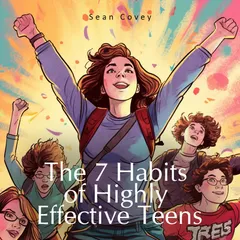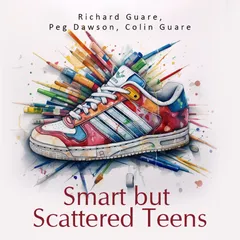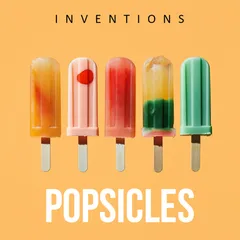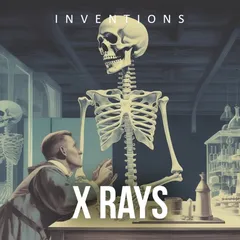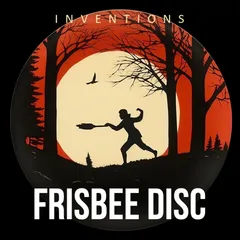Your brain on video games
Welcome back, incredible BookDuck fans. Are you a future brain scientist? Or do you want to learn how the brain can become more intelligent, better, and faster? Well, then, you are in the right place.
Let's look at a TED talk by Daphne Bavelier, a brain scientist who talks about our brains in the context of video games.
When hearing the words video games, people often imagine children right away, and that is true. But guess what? When children are asleep, adults are more involved. If we look at the projected demographics of video game play, we will see that older adults are the players of tomorrow. As you may have already realized, video games are here to stay. Now, I am sure none of you are complaining about that.
So the question scientists like Bavelier ask is how they can leverage that power.
Bavelier argues that playing in reasonable doses, especially action-packed shooter games like "Call of Duty," can positively affect many aspects of our behavior. We are all bombarded with the media, whether video games are good or bad for us. So let's put this aside and step into the lab with Bavelier, where they measure directly, in quantitative format, the impact of video games on the brain.
So she begins with common ideas we are all familiar with.
More screen time makes our eyesight better. This can be easily tested in the lab. And guess what? People who don't spend much time in front of screens and don't play lots of action games have normal vision. When people play video games for 15 hours per week, based on our previous test, we can determine that their vision must be really bad right? But guess what? Their vision is really, really good. Better than those who don't play. Are you confused? No worries. She explains how they are able to resolve small details like reading the fine print on a prescription rather than using magnifier glasses.
Another thing they can be good at is resolving different levels of gray. Imagine driving in a fog. It definitely makes a difference if you see the car in front of you, or rather than when you don't see, you will most likely avoid accidents if you see.
So scientists are trying to use the benefits to develop games for patients with low vision, which will impact retraining their brain to see better. So clearly, screen time won't make your eyesight worse when it comes to action video games. But if you don’t play video games, you don’t have to force yourself to start because remember in every seed of good there is a bad also.
The next common saying is that video games lead to attention problems and greater distractibility. There is a way to test attention too. Bavelier tests this by engaging the audience in a game. The audience shouts out the color names they see. However, the harder part comes when there is a conflict between the word and the color itself. Now, the attention of a person is determined by how fast they can resolve the conflict. Now why was this done? Well, to find our answer, people who play a lot of action games are able to resolve conflicts as well. As you guys can see, playing action games doesn't lead to attention problems either, however it’s still a distraction so we should control the amount of usage.
In reality, there can also be advantages in terms of attention if used in moderate amounts.
One aspect of attention that is also improved is the ability to track objects around. This is commonly used when driving; people track the cars around them, the pedestrians, and the running dogs. Which gives safety while driving. In the lab, this is also tested. People sit in front of computer screens, and they are given little tasks to test their attention. A typical normal young adult can have a span of about three or four objects of attention. An action video game player has a span of about six to seven objects of attention.
So, as we see the effects of video games on people's behavior, scientists use brain imaging and look at the impact of video games on the brain. Many changes are found, but the main changes are actually to the brain networks that control attention.
So, one part is the Parietal Cortex. It is known to control the orientation of attention. The other one is the frontal lobe, which controls how we sustain attention, and the other one is the anterior cingulate. This controls how we allocate and regulate attention and resolve conflict. I am sure you got scared by the terminology but don't worry; it's easy to understand. When brain imaging is done, Bavelier speaks about things they find. All three networks are actually more efficient for people that play action games.
This leads us to another finding about technology and the brain which is multitasking.
We all know of multitasking, and many of us try to do it when driving. Very bad idea! For example cell phones. As our attention shifts to our cell phones, we lose the ability to react to the car braking in front, which will most likely lead to an accident. Now, even these things can be measured in the lab. Obviously, people are not asked to drive around and see how many car accidents they have. That would definitely be a costly proposition. But, tasks on the computer are designed so that how good they are at switching from one task to another can be tested. And there is definitely a pattern because people who play video games are really, really good at multitasking.
Let's put these results in the context of other groups of technology users, for example, a group that is revered by society; these are people that engage in multimedia tasking.
What is multimedia tasking? It's the fact that most of us are distracted by the media when doing something else, such as searching on the web or chatting on Facebook. That's a multimedia tasker. Did you find similarities in your behavior? Then, you are multimedia taskers too, my friends.
There was actually a first study done by Bavelier's colleagues at Stanford. It showed that those people that identify as being high multimedia taskers are absolutely bad at multitasking. When measured in the lab, they are really bad.
So what do we understand by this? What is the takeaway?
Well, the takeaway is that the media is not created equal.
It is that not all media are created equal because you can't compare the effect of multimedia tasking and the effect of playing action games. They have totally different effects on different aspects of cognition, perception, and attention. Even within video games, different video games have different effects on our brains. So, we need to step into the lab and measure what is the effect of each video game.
When we think about the effect of video games on the brain, it's very similar to the effect of wine on health. There are some very poor uses of both. But when consumed in reasonable doses and at the right age, wine can be very good for health. Are you craving some wine now? Did you know that there are specific molecules that have been identified in red wine as leading to greater life expectancy? So it's the same way, just like that action video games have a number of ingredients that are really powerful for brain plasticity, learning, attention, vision, etc., and therefore, scientists like Bavelier are working on understanding what the active ingredients are, so that they can use them to deliver better games either for education or rehabilitation purposes.
In order to do this, more research is required, and extra steps such as training studies. An example of this could be mental rotation. A task where a shape is presented, and people have to find the rotated one of it. This task makes the brain cringe. Well, in the labs, tests like this one are done, and then people are forced to play ten hours of action games in a row. But they don't play 10 hours of action games in a row. They do distribute practice, meaning little shots of 40 minutes several days over a period of two weeks. Once they are done, they are tested again on a similar type of mental rotation task.
There are some results from Toronto showing that subjects performed where they were expected to perform given their age. After two weeks of training on video games, they performed better. And, what’s great is that the improvement is still there five months after having done the training.
You may be wondering why we don't have games that are ready to be put into the market to improve attention and vision, it’s because scientists like Bavelier are working on it. But, there is a challenge. And, that challenge is to understand what are the good ingredients in games to promote positive effects. The entertainment software industry is great at coming up with products we can't resist, but they may be different from the ones having positive effects. The issue is the two need to be put together to have games, but make sure they have a purpose to affect something positively. It takes brain scientists and people from the entertainment software industry and publishers to join together. They may not be the ones that usually meet every day, but they are on the right track. Let's leave you with that.
To sum up, the biggest and most shocking takeaway for many of us today is that video games actually have a positive impact on our behaviors and brains as well. We learned that they have the ability to make our brains faster and smarter if used correctly. So, next time you play your video games, don’t feel guilty because now you know that you are training your brain in the process. However, make sure you don’t over play video games because everything is nice when it’s done in proper amounts. While it may not have so many negative effects it’s still a distraction and therefore we must keep noth the positives and negatives under a control and balance.




